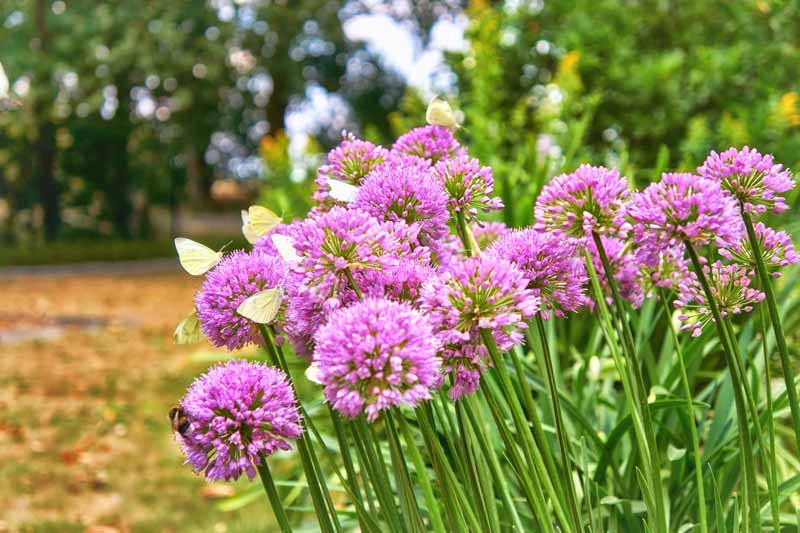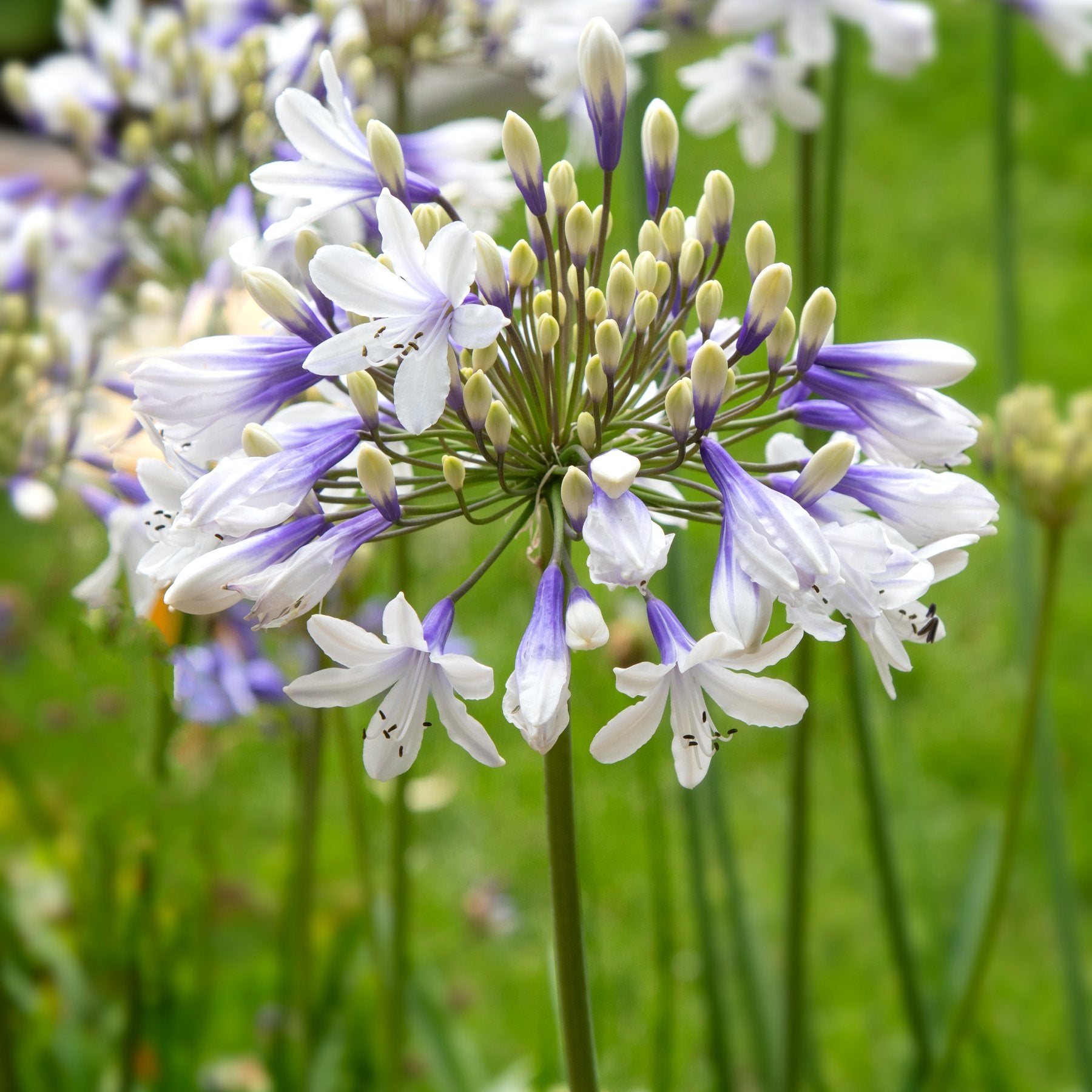Agapanthus Treatment Tips for Lush and Vibrant Flowers
Agapanthus Treatment Tips for Lush and Vibrant Flowers
Blog Article
Mastering the Art of Agapanthus Care: Crucial Steps for Healthy And Balanced Development and Vivid Blooms
In the world of horticulture, the growing of agapanthus stands as a satisfying undertaking for those that look for to support these classy blooming plants. From choosing the right variety to mastering pruning strategies, the journey towards cultivating prospering agapanthus plants is complex and holds the vital to unlocking the complete capacity of these agricultural treasures.

Choosing the Right Agapanthus Variety

When choosing the appropriate Agapanthus variety for your garden, consider elements such as environment viability, blossom shade, and growth behavior. Agapanthus, generally referred to as Lily of the Nile or African lily, is available in a variety of colors varying from tones of blue and purple to white. Pick a blossom shade that complements your existing garden scheme to produce an unified landscape. In addition, think about the environment in your region to guarantee the Agapanthus range you choose can prosper in your certain problems. Some ranges are more forgiving of chilly temperature levels, while others choose warmer environments. Comprehending the development routine of different Agapanthus ranges is essential for correct placement within your yard. Some varieties have a clumping development routine, ideal for borders or containers, while others have an even more dispersing nature, suitable for ground cover or mass growings. By carefully examining these variables, you can pick the ideal Agapanthus selection to enhance the elegance of your yard.
Ideal Growing Conditions
Taking into consideration the optimal ecological demands is necessary for successful Agapanthus farming. Agapanthus plants are delicate to chilly temperatures and ought to be protected from frost throughout winter months.
To make sure healthy development and vibrant blossoms, plant Agapanthus light bulbs at a deepness of concerning 2-4 inches and room them 8-12 inches apart. Mulching around the base of the plants helps keep wetness and subdues weed development.
Watering and Fertilizing Tips
Keeping correct wetness degrees and giving crucial nutrients are vital aspects in the treatment regimen for Agapanthus plants. When it comes to sprinkling Agapanthus, it is critical to strike a balance. These plants choose constantly wet soil yet are prone to root rot if overwatered.
Fertilizing Agapanthus is important for promoting healthy and balanced development and respected blooms. Apply a well balanced plant food, such as a 10-10-10 formula, in the very early springtime as new development emerges. Repeat this application every 6-8 weeks throughout the growing period. Avoid excessive fertilization, as it can lead to rich vegetation at the expenditure of flowers. Constantly comply with the producer's instructions for proper dilution and application methods. By following these watering and fertilizing tips, you can guarantee your Agapanthus plants prosper and generate lively, durable flowers.
Trimming Strategies for Agapanthus
Pruning Agapanthus plants at the proper times and with proper strategies is vital for keeping their health and promoting optimal growth and blooming. The ideal time to trim Agapanthus is in late winter or very early spring before brand-new growth arises.
For flowered stems, wait up until the blooms have actually perished and afterwards trim them back to the base. This not just cleans up the plant's appearance but also motivates the growth of new flower buds. Deadheading invested blossoms can also reroute the plant's energy right into creating more blossoms instead of establishing seeds. However, if you desire to look at these guys gather seeds for proliferation, leave some blossoms to dry and fully grown on the plant.
Keep in mind to make use of tidy, sharp tools to make exact cuts and minimize the danger of introducing diseases. Agapanthus. Routine pruning will certainly assist maintain your Agapanthus looking healthy and balanced and neat while making certain a bountiful display of attractive blossoms
Handling Typical Pests and Conditions
After making sure proper pruning methods for Agapanthus, it is important to deal with typical bugs and conditions that can impact the wellness and vitality of these plants. Agapanthus plants are normally sturdy yet can still succumb specific problems. One common bug that affects Agapanthus is the Agapanthus gall midge. This small, orange fly lays its eggs in the vegetation, leading to a knockout post altered growth get redirected here and blossom buds that fail to open up. To combat this insect, prune and ruin any kind of affected plant components and think about utilizing insecticidal soap.
One more typical issue is fungal fallen leave spot, which provides as dark lesions on the fallen leaves. To prevent fungal illness, make certain excellent air flow around the plants, stay clear of overhead watering, and get rid of any type of contaminated leaves quickly. Furthermore, Agapanthus plants can deal with root rot if they are planted in badly draining pipes dirt. To stop this, plant Agapanthus in well-draining dirt and stay clear of overwatering. By being alert and taking prompt activity against parasites and conditions, you can aid your Agapanthus plants thrive and generate lively blooms.

Conclusion
To conclude, mastering the art of agapanthus treatment entails picking the right variety, giving suitable planting problems, proper watering and fertilizing, ideal pruning techniques, and addressing common parasites and illness. By adhering to these vital actions, you can make sure healthy and balanced development and vivid blooms for your agapanthus plants. Remember to on a regular basis keep track of and keep your plants to promote their general wellness and long life.
To make sure healthy and balanced development and lively blooms, plant Agapanthus light bulbs at a depth of concerning 2-4 inches and room them 8-12 inches apart. By complying with these watering and fertilizing ideas, you can ensure your Agapanthus plants prosper and create lively, lasting blooms.
One common parasite that impacts Agapanthus is the Agapanthus gall midge. Additionally, Agapanthus plants can suffer from origin rot if they are grown in inadequately draining pipes dirt. By following these necessary steps, you can make sure healthy growth and vibrant blossoms for your agapanthus plants.
Report this page